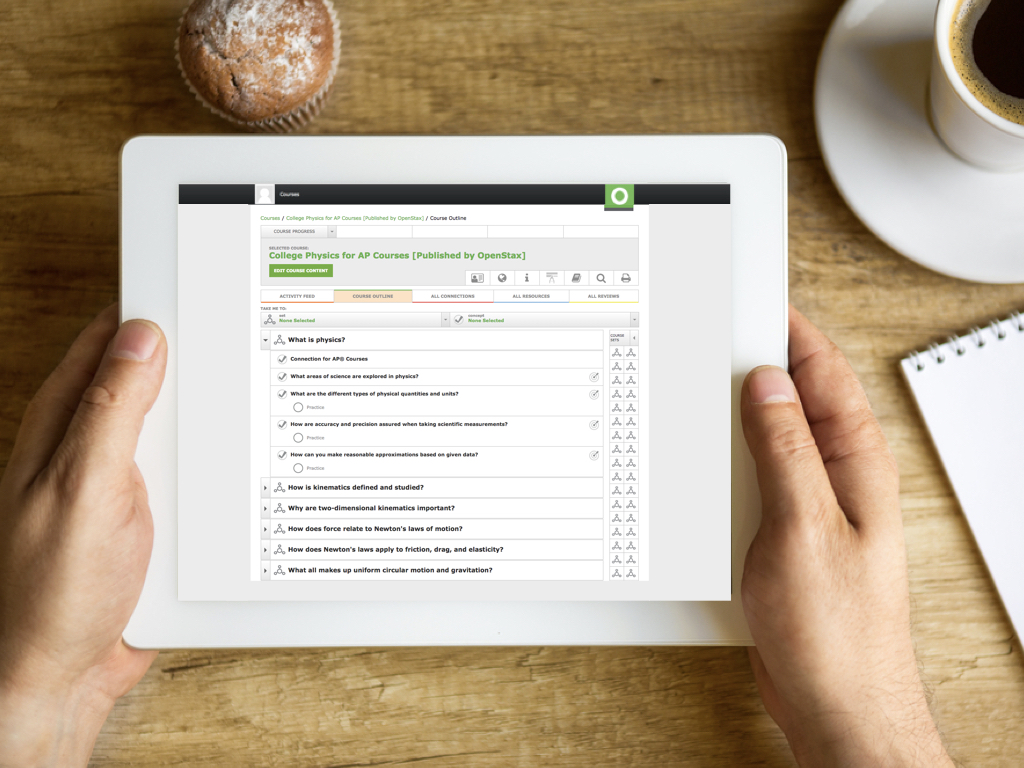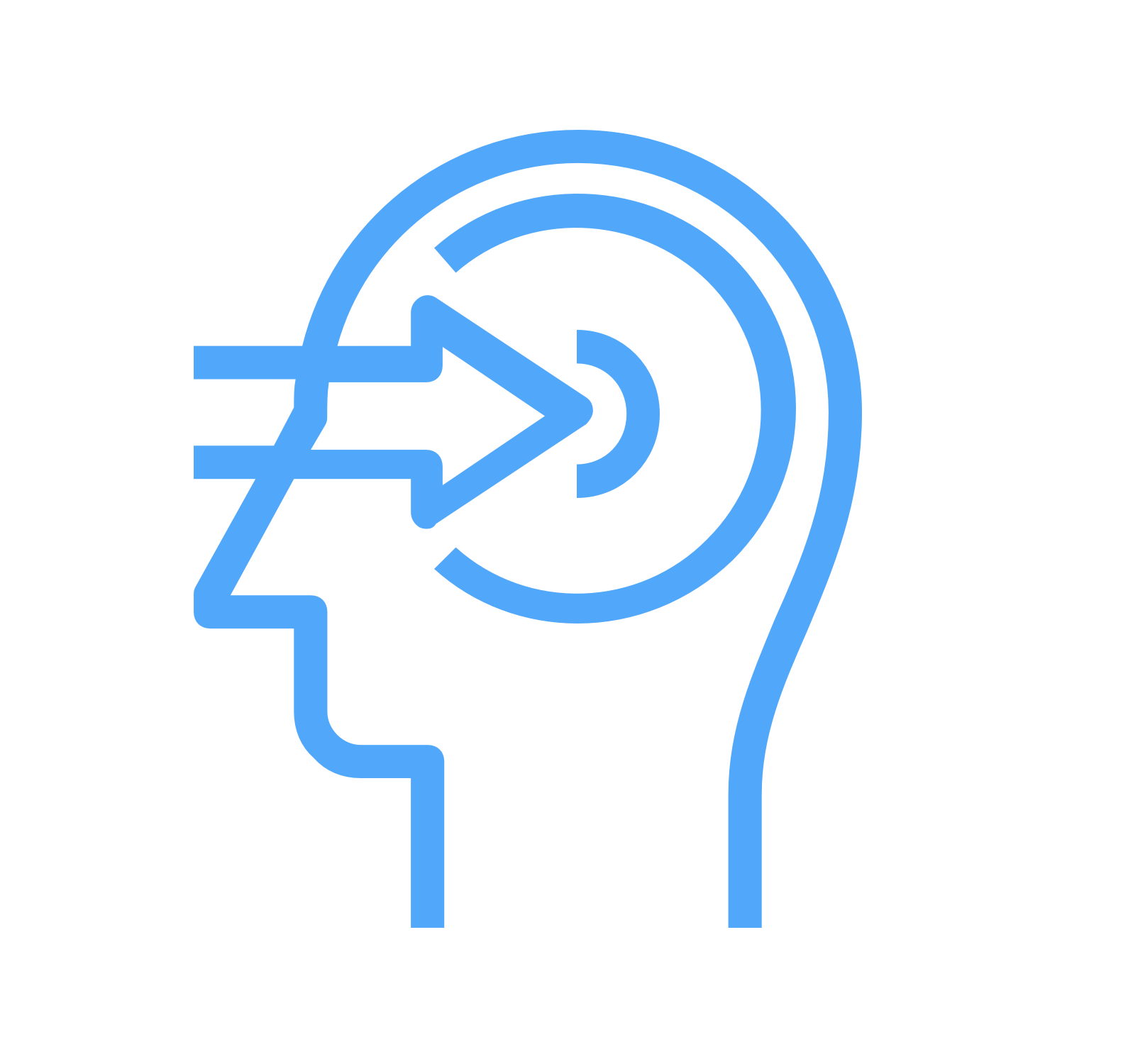
College Physics for AP®
The comprehensive contents from this book, combined with Odigia’s Teaching and Learning Tools have everything you need to engage, collaborate, track and assess your students.
This course includes:

949
practice questions

124
engagement activities

34
connections for AP®
Helping Teachers Do What They Do Best: Teach

Customize
Use our courses as is or easily customize them to fit your teaching style and the needs of your students. You can add your favorite resources, hide and show our existing content and pre-built assessments, or make them your own. Everything your students need, in one place!

Engage and Collaborate
Odigia combines learning materials, discussions, and tools to create a familiar social experience for students allowing you to easily connect and redirect students attention.

Track
See how much time students are spending on different areas of the course, which areas are creating the most amount of engagement and identify topics the students are struggling with. Flag and provide feedback on assignments to proactively meet individual students' needs.

Assess
Game theory allows students to monitor their progress visually and motivates them to stay on track. Students can see exactly what activities they need to complete, which ones have been flagged and compare their progress against the overall class.
College Physics for AP Course Outline
What is Physics?
- Connection for AP® Courses
- Which areas of science are explored in physics?
- What are the different types of physical quantities and units?
- How are accuracy and precision assured when taking scientific measurements?
- How can you make reasonable approximations based on given data?
How is Kinematics defined and studied?
- Connection for AP® Courses
- What is the relationship between position and displacement?
- What is the difference between vectors, scalars, and coordinate systems?
- How are time, velocity, and speed related to each other?
- What is acceleration?
- How are motion equations applied to constant acceleration in one dimension?
- How are problem-solving basics used for one-dimensional kinematics?
- How does gravity associate with falling objects?
- How can graphical analysis be used in one-dimensional motion?
Why are two-dimensional kinematics important?
- Connection for AP® Courses
- What is kinematics in two dimensions?
- How can vector addition and subtraction be applied in graphical methods?
- How can vector addition and subtraction be applied in analytical methods?
- What all consists of the projectile motion?
- What is the addition of velocities?
How does force relate to Newton’s laws of motion?
- Connection for AP® Courses
- What is force?
- What is Newton’s first law of motion?
- What is Newton’s second law of motion?
- What is Newton’s third law of motion?
- How does normal, tension, and other examples of forces relate to Newton’s laws?
- How are problem-solving strategies used in Newton’s laws of motion?
- What else is part of Newton’s laws of motion?
- What are the four basic forces?
How does Newton’s laws apply to friction, drag, and elasticity?
- Connection for AP® Courses
- What is friction?
- What are drag forces made of?
- How does elasticity relate to stress and strain?
What all makes up uniform circular motion and gravitation?
- Connection for AP® Courses
- What is rotation angle and angular velocity?
- How is centripetal acceleration expressed?
- What is centripetal force?
- How does fictitious forces and non-inertial frames relate to the Coriolis force?
- What is Newton’s universal law of gravitation?
- How is satellites and Kepler’s laws an argument for simplicity?
How do work, energy and resources relate to each other?
- Connection for AP® Courses
- What is the scientific meaning of work?
- What does kinetic energy have to do with work-energy theorem?
- Why is gravitational potential energy important?
- How does conservative forces and potential energy relate to each other?
- What is nonconservative forces and what role do they play in with energy?
- What is the law of the conservation of energy?
- Why is power important?
- How do humans produce work, energy, and power?
- How much energy does the world use?
How does linear momentum relate to collisions?
- Connection for AP® Courses
- How does linear momentum relate to force?
- How does impulse affect us?
- What is the conservation of momentum?
- How are elastic collisions displayed in one dimension?
- How are inelastic collisions displayed in one dimension?
- How are collisions of point masses displayed in two dimensions?
- What is rocket propulsion?
What are statics and torques?
- Connection for AP® Courses
- What is the first condition for equilibrium?
- What is the second condition for equilibrium?
- How is stability involved in equilibrium?
- How can we include applications of statics with problem-solving strategies?
- What kinds of simple machines are there?
- How do we apply forces and torques in muscles and joints?
How do rotational motion and angular momentum relate to physics?
- Connection for AP® Courses
- How do we find angular acceleration?
- How do we find kinematics in rotational motion?
- How does the dynamics of rotational motion relate to rotational inertia?
- How do we find the equation for rotational kinetic energy?
- What is the angular momentum and how do we apply its conservation?
- How do we apply the collisions of extended bodies in two dimensions?
- How do we apply the gyroscopic effects with the vector aspects of angular momentum?
How does fluid statics apply to us?
- Connection for AP® Courses
- What is a fluid?
- What is density?
- What is pressure?
- How do we find the variation of pressure with depth in a fluid?
- What is Pascal’s principle?
- How does gauge pressure, absolute pressure, and pressure measurement relate to each other?
- What is Archimedes’ principle?
- How do we find cohesion and adhesion in liquids and how does it apply to surface tension and capillary action?
- How do we get pressures in our bodies?
What is the difference in fluid dynamics between its biological and medical applications??
- Connection for AP® Courses
- How does flow rate relate to velocity?
- What is Bernoulli’s equation?
- How do we use the most general applications of Bernoulli’s equation?
- How is viscosity and laminar flow applied in Poiseuille’s law?
- How does the Reynolds number relate to the onset of turbulence?
- What can we find in the motion of an object in a viscous fluid?
- How do we use molecular transport phenomena in diffusion, osmosis, and related processes?
How does temperature, kinetic theory, and that gas laws relate to each other?
- Connection for AP® Courses
- What is temperature?
- What is the difference in thermal expansion between solids and liquids?
- What is the ideal gas law?
- How does kinetic theory describe atomic and molecular explanation of pressure and temperature?
- What are different types of phase changes?
- What is the stages water goes through in humidity, evaporation, and boiling?
What are the different types of heat and heat transfer methods?
- Connection for AP® Courses
- What is heat?
- How does temperature change affect heat capacity?
- How does phase change affect latent heat?
- What are different types of heat transfer methods?
- What is conduction?
- What is convection?
- What is radiation?
What is thermodynamics?
- Connection for AP® Courses
- What is the first law of thermodynamics?
- What are some simple processes in the first law of thermodynamics?
- How are heat engines and their efficiency applied to the second law of thermodynamics?
- How is Carnot’s perfect heat engine restate the second law of thermodynamics?
- How does heat pumps and refrigerators apply to thermodynamics?
- How does entropy and the second law of thermodynamics relate to disorders and the unavailability of energy?
- What is the underlying explanation in a statistical interpretation of entropy in the second law of thermodynamics?
How does oscillatory motion and waves relate to physics?
- Connection for AP® Courses
- How is Hooke’s law applied to stress and strain revisited?
- How does period relate to frequency in oscillations?
- How is a simple harmonic motion a special periodic motion?
- How do we apply the simple pendulum in acceleration?
- How does energy relate to the simple harmonic oscillator?
- What is the difference between a uniform circular motion and a simple harmonic motion?
- How can harmonic motion be damped?
- What is the difference between forced oscillations and resonance?
- What are waves?
- How can we compare superposition and interference?
- How does the energy in waves create intensity?
What are the physics of hearing?
- Connection for AP® Courses
- What is sound?
- How do we find speed, frequency, and wavelength of sound?
- How do we compare sound intensity and sound level?
- What is the difference between Doppler effect and sonic booms?
- How can sound interference and resonance be applied to standing waves in air columns?
- How does hearing relate to sound?
- What is an ultrasound?
How can we compare electric charge to electric field?
- Connection for AP® Courses
- How does conservation of charge relate to static electricity and charge?
- What is the difference between conductors and insulators?
- What is Coulomb’s law?
- How does electric field relate to the concept of a field revisited?
- How does electric field lines create multiple charges?
- What are different types of electric forces in biology?
- What are different types of conductors and electric fields in static equilibrium?
- How do we apply electrostatics in real-life?
How does electric potential and electric field relate to physics?
- Connection for AP® Courses
- What kind of relationship is between electric potential energy and potential difference?
- How is electric potential expressed in a uniform electric field?
- How does electrical potential form a point charge?
- What is equipotential lines?
- What is the difference between capacitors and dielectrics?
- What changes about capacitors in series versus parallel?
- How is energy stored in capacitors?
What is Ohm’s law, and how does it relate to electric current and resistance?
- Connection for AP® Courses
- What is current?
- How does Ohm’s law explain resistance and simple circuits?
- What is the difference between resistance and resistivity?
- How does electric power relate to energy?
- How can we compare alternating current with direct current?
- How does electric hazards affect the human body?
- What are nerve conduction–electrocardiograms?
How are circuits used in DC instruments?
- Connection for AP® Courses
- What is the difference in resistors between series and parallel?
- How is electromotive force related to terminal voltage?
- What are Kirchhoff’s rules?
- How are DC voltmeters and ammeters used?
- How accurate are null measurements?
- What happens with DC circuits that contain resistors and capacitors?
What is Magnetism?
- Connection for AP® Courses
- What are magnets?
- What is the difference between ferromagnets and electromagnets?
- How do we find the magnetic field lines in the magnetic fields?
- How does the force on a moving charge in a magnetic field apply to magnetic field strength?
- What are examples and applications of force on a moving charge in a magnetic field?
- What is the Hall effect?
- What are the effects of magnetic force on a current-carrying conductor?
- How can we apply motors and meters to torque on a current loop?
- How does magnetic fields produced by currents apply to Ampere’s law?
- What effects does magnetic force have between two parallel conductors?
- What are other applications of magnetism?
What effects does electromagnetic induction, AC circuits, and electrical technologies have in life?
- Connection for AP® Courses
- How does induced emf relate to magnetic flux?
- What is the difference between Faraday’s law and Lenz’s law?
- What is motional emf?
- How does eddy currents affect magnetic damping?
- What kind of impact does electric generators have?
- What is back emf?
- How does transformers work?
- What types of systems and devices incorporate electrical safety?
- How do we find the inductance in an inductor?
- What can we find with RL circuits?
- What is the difference between inductive and capacitive reactance?
- How does RLC series relate to AC circuits?
What are electromagnetic waves?
- Connection for AP® Courses
- How are Maxwell’s equations applied when we predict and observe electromagnetic waves?
- How are the production of electromagnetic waves created?
- What is the electromagnetic spectrum?
- What is so important about the energy in electromagnetic waves?
What is geometric optics?
- Connection for AP® Courses
- Why is the ray important when looking at the aspect of light?
- What is the law of reflection?
- What is the law of refraction?
- What is the phenomenon of total internal reflection?
- How does dispersion relate to the rainbow and prisms?
- How does lenses affect image formation?
- How does mirrors affect image formation?
How do optical instruments enhance vision?
- Connection for AP® Courses
- What are the physics of the eye?
- Why is vision correction important?
- What are some theories about color and color vision?
- Why are there different types microscopes?
- How do telescopes function?
- What are aberrations?
What are wave optics?
- Connection for AP® Courses
- How does interference relate to the wave aspect of light?
- How does diffraction apply to Huygens’s principle?
- What is Young’s double slit experiment?
- What is multiple slit diffraction?
- What is single slit diffraction?
- How does the Rayleigh criterion affect limits of resolution?
- How does thin film interference affect the rainbow formation?
- What is polarization?
- *Extended Topic* How is microscopy enhanced by the wave characteristics of light?
What is special relativity?
- Connection for AP® Courses
- What is Einstein’s postulates?
- How does simultaneity relate to time dilation?
- How is length contraction calculated?
- How is relativistic addition of velocities used?
- How is relativistic momentum calculated?
- What are examples of relativistic energy in life?
What is quantum physics?
- Connection for AP® Courses
- How do we calculate the quantization of energy?
- What is the photoelectric effect?
- How does photon energies relate to the electromagnetic spectrum?
- What is the photon momentum?
- How does the particle-wave duality relate to EM radiation?
- What happens in the wave nature of matter?
- How does probability relate to the Heisenberg uncertainty principle?
- What happens with the particle-wave duality?
What makes up atomics physics?
- Connection for AP® Courses
- How did the discovery of the atom happen?
- What functions do electrons and nuclei play in an atom?
- What was Bohr’s theory on the hydrogen atom?
- What are the atomic origins and applications of x rays?
- How are atomic excitations and de-excitations applied?
- How does the wave nature of matter cause quantization?
- How does patterns in the spectra reveal more quantization?
- What are the rules about quantum numbers?
- What does the Pauli exclusion principle state?
How does radioactivity relate to nuclear physics?
- Connection for AP® Courses
- What is nuclear radioactivity?
- How is radiation detected?
- What is the substructure of the nucleus?
- How does nuclear decay relate to conservation laws?
- How do we find the half-life in radioactive dating?
- How do we bind energy?
- What is tunneling?
What types of medical applications are applied to nuclear physics?
- Connection for AP® Courses
- What kinds of medical imaging and diagnostics exist?
- What are the biological effects of ionizing radiation?
- What are types of therapeutic uses with ionizing radiation?
- What is food irradiation?
- What is fusion?
- What is fission?
- What are different types of nuclear weapons?
What is involved in particle physics?
- Connection for AP® Courses
- How is the Yukawa particle involved in the Heisenberg uncertainty principle?
- What are the four basic forces?
- How do accelerators create matter from energy?
- What role does particles and patterns play in conservation laws?
- Quarks: Is that all there is?
- How does GUTs apply to the unification of forces?
What are the frontiers of physics?
- Connection for AP® Courses
- How is cosmology related to particle physics?
- How does general relativity relate to quantum gravity?
- What is the Superstring theory?
- How does closure apply to dark matter?
- What is the difference between complexity and chaos?
- What happens with high-temperature superconductors?
- What are some questions to ask?
The AP Physics Collection is a free, turnkey solution for your AP® Physics course, brought to you through a collaboration between OpenStax and Rice Online Learning. The integrated collection features the OpenStax College Physics for AP® Courses text, Concept Trailer videos, instructional videos, problem solution videos, and a correlation guide to help you align all of your free content.
The College Physics for AP® Courses text is designed to engage students in their exploration of physics and help them apply these concepts to the Advanced Placement® test. This book is Learning List-approved for AP® Physics courses.
About the authors:
Senior Contributing Authors
Gregg Wolfe, Avonworth High School
Erika Gasper
John Stoke
Julie Kretchman
David Anderson
Nathan Czuba, Sabio Academy
Sudhi Oberoi, Raman Research Institute
Liza Pujji, Manukau Institute of Technology
Irina Lyublinskaya, CUNY College of Staten Island
Douglas Ingram, Texas Christian University
Jason Hafner
Gigi Nevils-Noe
Matt Wilson

